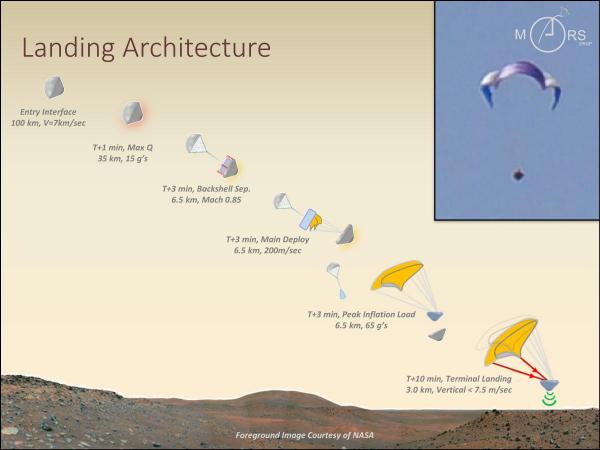Hang Gliders on Mars? New Way to Land Tiny Robotic Probes to Explore Mars
| Ana Verayo | | May 19, 2015 10:32 PM EDT |
(Photo : PSI/NASA) The MARSDROP system will deploy tiny robotic probes via hang gliders on Mars.
When it comes to new ways of exploring Martian terrain, scienists believe that hang gliders are the future to landing microprobes on the surface of the Red Planet. The MARSDROP program aims to land these microprobes using a series of gliders in order for these small robotic probes to access regions that are not easily accessible to traditional probes.
Like Us on Facebook
This will be executed by sending a pair of landers to Mars with a larger spacecraft. The landers will now be deployed from the parent vehicle where they will extend a parawing similar to a hang glider which will fly over the alien atmosphere.
When these landers reach their target areas, they will now release small microprobes where they will detach and land on the rough, dusty surface. These tiny robotic explorers will be guided by video navigation that will scan through the terrain where they will be deployed within 30 feet of the target area.
MARSDROP will be used to explore challenging to reach areas such as volcanic remnants or recently formed impact craters, massive glaciers or other regions that larger spacecraft are unable to visit.
According to Rebecca M.E. Williams who is a senior scientist of the Planetary Science Institute, this new approach can extend the possibility of exploring more remote areas such as canyons found in Vallers Marineris or even geologically active sites like polar geysers or where there are seasonal water flows.
The microprobes will be equipped with a scientific suite of tools to examine the surface of Mars that include video cameras, microscopes and seismometers and weather measuring equipment. By investigating the different terrains on Mars, scientists can acquire enough knowledge to prepare for the first human landing on Mars happening in 2039.
Currently, there are rovers and landers on Mars that continue to send data from their investigations and sampling rock compositions however they also possess landing restrictions that prevent scientists from studying other geologically unique regions.
With MARSDROP, microprobes are also developed that are far less expensive than traditional rovers and could land precisely near the target region of the alien world.
A prototype has already been developed for the system and tested by scientists where researchers also believe that this will cost NASA five percent less in expenses than regular missions and triple the scientific data returned from recent Mars missions.
TagsMars, hang gliders Mars tiny robotic probes, microprobes mars marsdrop, hang gliders marsdrop mars probes, NASA, PSI, MARSDROP
©2015 Chinatopix All rights reserved. Do not reproduce without permission
EDITOR'S PICKS
-

Did the Trump administration just announce plans for a trade war with ‘hostile’ China and Russia?
-

US Senate passes Taiwan travel bill slammed by China
-

As Yan Sihong’s family grieves, here are other Chinese students who went missing abroad. Some have never been found
-

Beijing blasts Western critics who ‘smear China’ with the term sharp power
-

China Envoy Seeks to Defuse Tensions With U.S. as a Trade War Brews
-

Singapore's Deputy PM Provides Bitcoin Vote of Confidence Amid China's Blanket Bans
-

China warns investors over risks in overseas virtual currency trading
-

Chinese government most trustworthy: survey
-

Kashima Antlers On Course For Back-To-Back Titles
MOST POPULAR
LATEST NEWS
Zhou Yongkang: China's Former Security Chief Sentenced to Life in Prison

China's former Chief of the Ministry of Public Security, Zhou Yongkang, has been given a life sentence after he was found guilty of abusing his office, bribery and deliberately ... Full Article
TRENDING STORY

China Pork Prices Expected to Stabilize As The Supplies Recover

Elephone P9000 Smartphone is now on Sale on Amazon India

There's a Big Chance Cliffhangers Won't Still Be Resolved When Grey's Anatomy Season 13 Returns

Supreme Court Ruled on Samsung vs Apple Dispute for Patent Infringement

Microsoft Surface Pro 5 Rumors and Release Date: What is the Latest?










